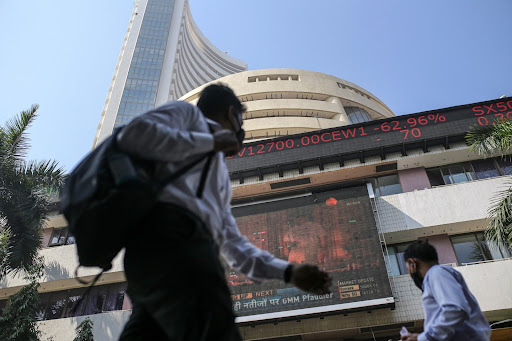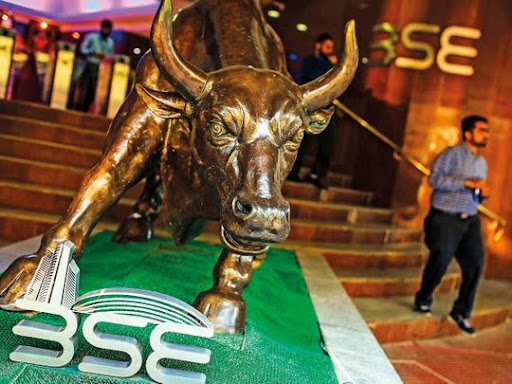India’s Stock Market Reaches $5 Trillion Milestone: Analyzing The Rapid Surge

India’s Stock Market Isn’t Pricing in a Full Covid Lockdown
Source: Bloomberg
India’s stock market has reached a remarkable milestone, hitting a market capitalization of $5 trillion for the first time. This achievement places India among an elite group of countries with stock markets of this magnitude, alongside the United States, China, Japan, and Hong Kong. The journey from $4 trillion to $5 trillion took just six months—a rapid ascent compared to the previous trillion-dollar milestones.
Historical Growth Trajectory
India’s market capitalization first crossed the $1 trillion mark in 2007. It took a decade to double to $2 trillion by 2017. The market then experienced accelerated growth, reaching $3 trillion in 2021 and $4 trillion in late 2023. The swift rise to $5 trillion underscores the dynamic and resilient nature of the Indian economy.
Looking ahead, analysts are optimistic about India’s continued growth. Predictions suggest that the Indian stock market could potentially reach $10 trillion by 2030, supported by ongoing reforms, technological advancements, and robust economic policies. This anticipated growth is expected to enhance India’s attractiveness as a global investment destination and solidify its position in the global financial markets.

India’s stock market rally looks unstoppable | Markets
Source: Gulf News
Factors Driving the Surge
The remarkable rise in India’s stock market can be attributed to several key factors:
- Robust Economic Policies and Reforms The Indian government’s implementation of business-friendly policies and economic reforms has played a pivotal role. Measures aimed at simplifying regulations, enhancing the ease of doing business, and fostering a favorable investment climate have attracted both domestic and international investors.
- Digital Transformation and Technological Advancements Rapid digitalization across various sectors has significantly boosted productivity and market efficiency. Initiatives like Digital India have revolutionized the financial services sector, facilitating broader participation in the stock market.
- Increased Foreign Investment Despite occasional withdrawals by Foreign Institutional Investors (FIIs), the overall trend has been positive. Significant foreign investments have flowed into India’s markets, driven by expectations of stable economic growth and attractive returns.
- Domestic Investor Participation The surge in market capitalization has also been driven by increased participation from domestic institutional investors, retail investors, and high-net-worth individuals (HNWIs). Confidence among local investors has been bolstered by consistent economic growth and positive market sentiment.
- Sectoral Diversification The Indian stock market has seen growth across a diverse range of sectors. Notably, the information technology, pharmaceuticals, and renewable energy sectors have performed exceptionally well, contributing to the overall market expansion.
- Strong Corporate Earnings Many Indian companies have reported robust earnings, which has enhanced investor confidence and driven up stock prices. The profitability and growth potential of leading firms have been crucial in driving market capitalization.
- Initial Public Offerings (IPOs) A surge in IPOs has significantly contributed to market capitalization. High-profile listings, including those of tech unicorns and major conglomerates, have attracted considerable investment and expanded the market.
- Stable Political Environment A stable political environment and continuity in governance have provided a favorable backdrop for economic policies and reforms to take effect, instilling confidence among both domestic and international investors.
- Global Economic Trends Favorable global economic conditions and trade dynamics have bolstered India’s market performance. The global shift towards emerging markets has benefited India significantly.
- Strategic Partnerships and Alliances Strategic international partnerships and trade agreements have opened new avenues for growth and investment, further integrating India into the global economy.
Conclusion
India’s achievement of reaching a $5 trillion market capitalization reflects its economic strength and sets a promising precedent for future growth. As the country continues to evolve and innovate, the stock market’s upward trend is likely to persist, heralding a new era of economic prosperity. With continued investment in key sectors and supportive policies, India is well-positioned to sustain its momentum and further solidify its role as a major player in the global financial arena.

